Top best grape varieties for central Russia
Large and beautiful bunches of grapes are also obtained in central Russia. The main thing is to carefully consider the choice of variety. If you plant the wrong one, the plant will often get sick, and the yield and growth of young shoots will decrease. As a result, instead of tasty grapes, the summer resident will receive weak plants. Let's look at what to look for when choosing a variety for cultivation in central Russia.
Requirements for grape varieties for central Russia
For cultivation in central Russia, frost-resistant varieties are chosen. The grapes must withstand temperatures as low as -30°C so that the shoots do not freeze. Otherwise, the yield will decrease, the berries will grow small and insipid.
In the middle zone, plants that are resistant to viral, fungal and bacterial diseases, many of which are provoked by rain, fog and dew, take root well. Another important quality is drought resistance. In some regions it rarely rains and summers are dry. The quantity and quality of the harvest should not be affected by the lack of moisture.
Top best
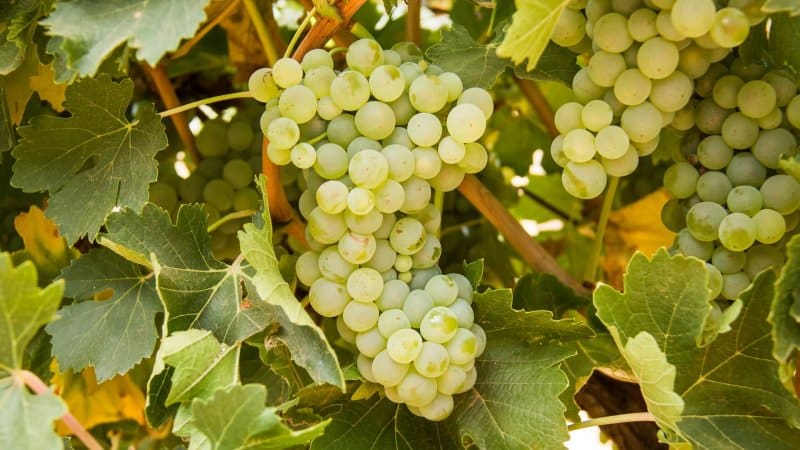
When choosing a variety, pay attention to several criteria: taste, presentation of the berries, demands on growing conditions, ripening period. Let's consider the top best grape varieties for central Russia.
Lunar
A medium-early ripening table variety. The plant is medium-sized, with large dark green leaves. The clusters are large, cylindrical-conical, the average weight of one is 500 g.The berries are round-oval, one-dimensional, weighing 6 g. The skin is durable, the color is white-pink, there is a slight waxy coating. The flesh is crispy. sweet, with a pleasant nutmeg aroma. Tasting score - 8 points. Each berry contains 2-3 seeds.
The grapes can withstand frosts down to -22°C and are covered for the winter. Increased resistance to powdery mildew, anthracnose, rot, and septoria. Lunar is rarely damaged by insect pests.
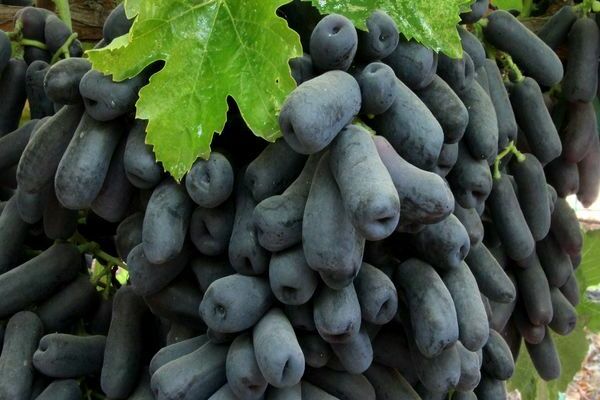
Venus
Venus grapes are raisins. It does not require special attention and is suitable for summer residents who are growing crops for the first time. Venus does not require shelter for the winter and can withstand frost without problems. Ripening time is 115–125 days, the plant is tall. The clusters are of medium density, the weight of one is from 200 to 600 g. The berries are blue-black, small, weighing about 2 g each. The skin is thin and easily separated from the pulp.
Interesting! Many gardeners mistakenly believe that Venus and Venus are the same variety. This is not so: Venus sultanas have taller bushes, and in autumn the leaves are painted a brighter orange color. They are considered similar because of the same berries and taste. Only an experienced winegrower will distinguish Venus from Venus by appearance.
The taste of Venus berries is pleasant, harmoniously nutmeg, with a pronounced grape aroma. Kishmish does not deteriorate during long-distance transportation.
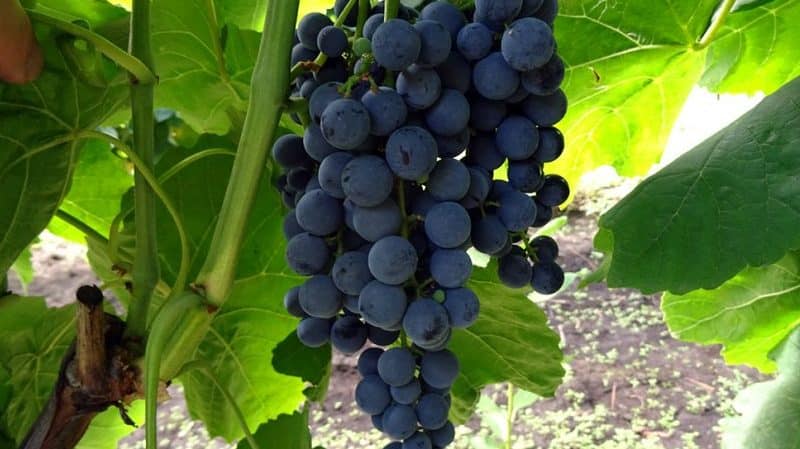
Chrysolite
The Chrysolite grape feels good in all regions of Russia: in Moscow region, Volga region, Nizhny Novgorod region, in the Urals. Table variety, medium-early ripening period. The leaves are green, with slight pubescence, the shoots are flexible and powerful. The clusters are large, conical, weighing about 600 g. The berries are round-ovoid, green-yellow in color. The taste is sweet, the aroma is nutmeg, the juice is colorless. Tasting score: 8.6 points.
For better yield, Chrysolite is covered for the winter. Jams, jellies, marshmallows, and marmalade are prepared from ripe berries. Grapes are not used for transportation - on the road they quickly lose their taste and commercial qualities.
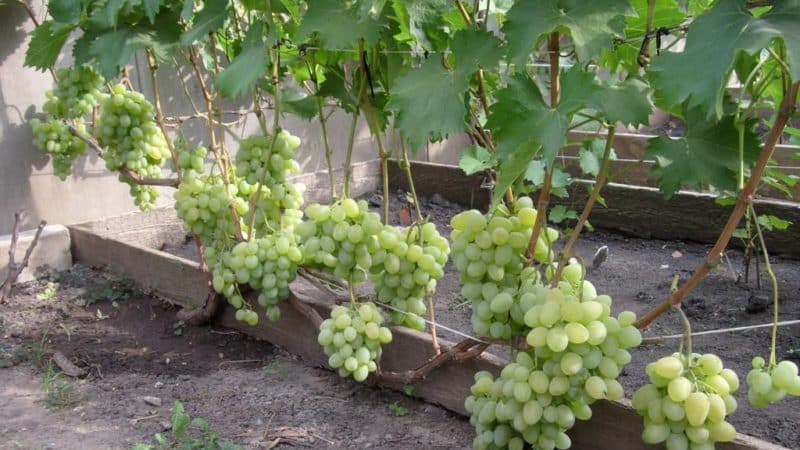
Aleshenkin's gift
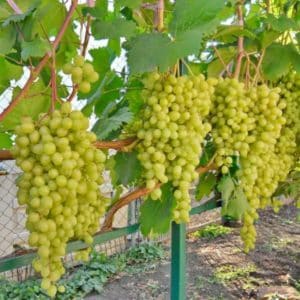
One of the most popular and productive varieties. Super early, with proper care the berries are harvested within 110 days. The bushes are tall, with developed vines, the leaves are green, smooth and without pubescence. The clusters are loose, cone-shaped, average weight is 0.5–1 kg, some specimens reach 2 kg. The berries are round-oval, weighing 4-5 g, the skin is translucent and durable. The color is amber, with a green tint, the juice is colorless. The taste is rich and very sweet, tasting score - 7 points.
Aleshenkin Suitable for fresh consumption and preparation of juices, compotes, jams. After processing, the berries do not lose their sweet and sugary taste. Among the disadvantages of the variety, average immunity to diseases is noted, so to get a good harvest, summer residents process plant with a solution of Bordeaux mixture.
Victoria
The Victoria table variety is valued for its attractive commercial qualities and is grown for personal consumption and sale. From the moment the buds open to the ripeness of the berries, 110–120 days pass. The frost resistance of the plant is down to -26°C; it requires shelter for the winter.
The clusters are loose, weighing from 500 to 700 g. The berries are oval, red-raspberry, very beautiful. The weight of one is about 5 g, the skin is dense. The pulp is sweet and aromatic, with a pleasant aftertaste. Victoria bears fruit 2-3 years after landings. Resistance to mildew is high, resistance to septoria and rot is average.
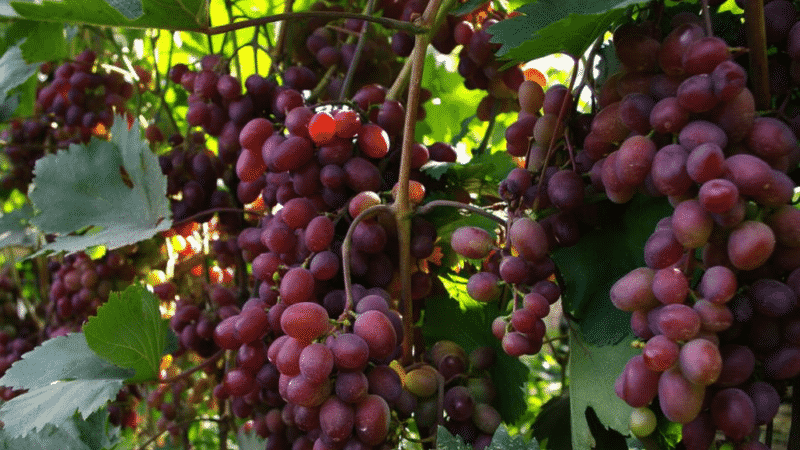
Crystal
Technical grade Crystal super early. The bushes are medium-sized, the leaves are strongly dissected, without pubescence. The bunch is medium dense, weighing about 170 g.The berries are oval-round, yellow-green in color. The taste is sweet, and the berries are used to make wine and champagne.
Summer residents note the variety's immunity to fungal diseases and frost resistance: the grapes can withstand temperatures as low as -35°C. Crystal does not cause any difficulties in planting and caring and quickly adapts to the climatic conditions of the region. It begins to bear fruit in the second year; after ripening, the clusters do not fall off.
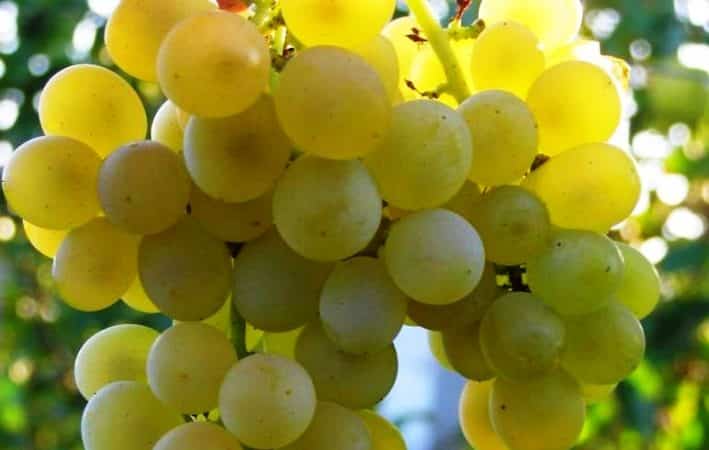
Bacchus
The technical unpretentious Bacchus grape is resistant to spring frosts and bears fruit regardless of the place of cultivation. The color of the berries is green-yellow, the skin is medium thick with a slight waxy coating. The shape of the fruit is round-oval, the clusters are conical and loose. The weight of the berry is about 4 g. The taste is harmonious, sweet, with spicy notes.
Interesting! The Bacchus variety is popular not only in Russia, but also in Germany and England. Winegrowers value it for its spicy fruity aroma and early ripening. Elite wines are prepared from the fruits.
Bacchus is suitable for fresh consumption, but the berries are mainly used for the production of wine, juices, and champagne.
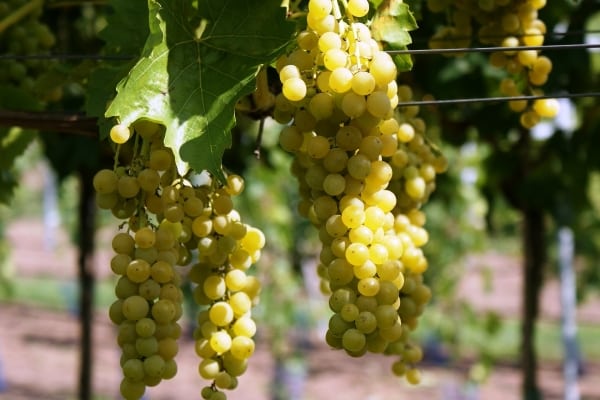
Ermak
Early ripening technical variety. The bushes are tall, with large, heavily dissected leaves. The clusters are dense, cylindrical, average weight - 200 g. The berries are round, black and blue. The taste is pleasant, but not too sweet. Dry wine is prepared from the grapes, the tasting score of which is 7.5 points.
The plants are not covered for the winter, which makes care easier. To increase yield, old shoots are pruned. Ermak's resistance to fungal diseases is at an average level.
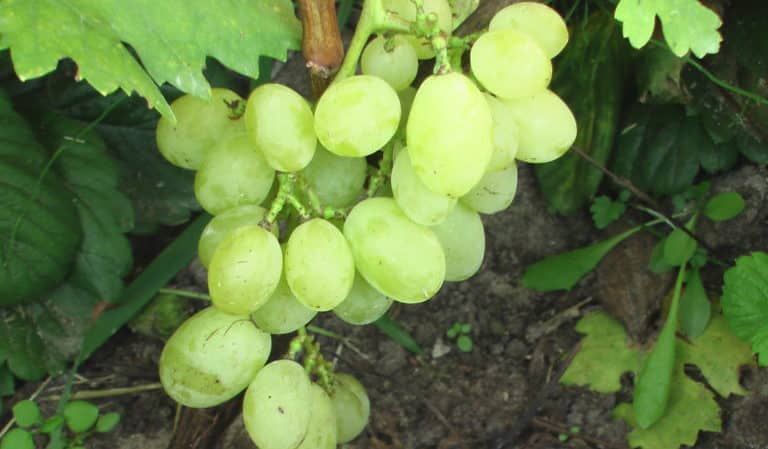
The best early-ripening, mid-ripening and late-ripening grape varieties
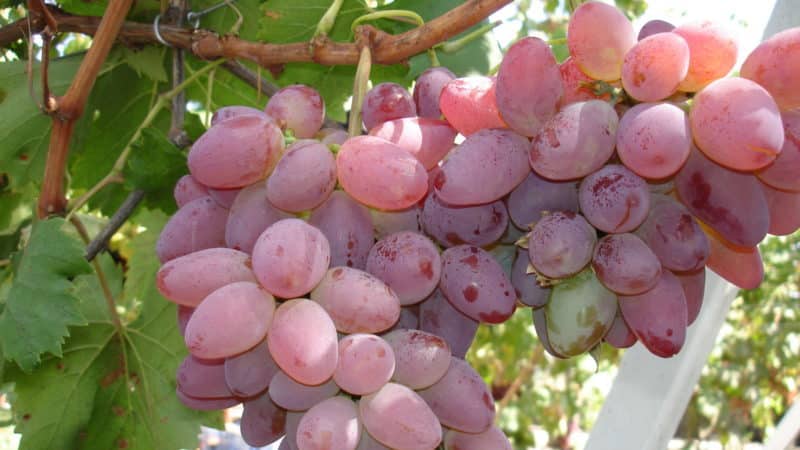
The ripening period of early varieties is 110–120 days. Some gain ripeness within 3 months from the moment the leaves bloom. Among these varieties are grapes Harold. The plant is frost-resistant, ripening period is 90–95 days. The bushes are tall and require timely shaping. The berries are large and sweet, and are universal in use.
Summer residents highlight the Russian Early variety. The bushes are tall and powerful; when planting, they are tied to trellis. The berries are round, dark pink, sugary. Early Russian bears fruit for 3-4 years and is resistant to fungal diseases and rot.
The ripening period for medium varieties is 120–140 days. Summer residents choose grapes for planting in the middle zone White giant - it is frost-resistant, unpretentious and high-yielding. The weight of the bunch is 1-2 kg, the weight of the berry is about 12 g. The color is white, with a waxy coating, the skin is durable. The taste is pleasant, with a sweet aroma.
Golden Rain grapes are also grown. The berries are oblong, yellow-green, weighing about 8 g. The taste is original: berry-fruity, with a pleasant aroma. To obtain a rich harvest, Golden shower regularly feed nitrogen and potassium fertilizers.
Late varieties ripen in 140–150 days. They require constant care; not every summer resident will be able to monitor the plantings for 4-5 months in a row. Late ripening table variety Italy It is slightly affected by mildew and oidium and produces large clusters of medium density. The berries are large, juicy, with a nutmeg taste. Tasting score: 8.6 points.
December grapes are also in demand. The berries are dark blue, weighing about 4 g. The clusters are large, conical, weighing about 400 g. The plant's winter hardiness is down to -27°C, the vines ripen quickly. Immunity to fungal diseases is high.
Technical
Technical varieties are grown mainly in spacious garden plots in order to obtain ripe bunches and process them into wine or juice. From technical grapes, summer residents choose:
- Solaris. Very early, tall bushes. Frost resistance - down to -24°C, unpretentious in cultivation. The berries are golden, the taste is pleasant. Solaris produces delicious wines with a nutty and fruity aroma.
- Rondo. The ripening period is mid-early; in cold regions the plant requires shelter for the winter. The grapes are resistant to mildew and bear fruit consistently. The berries are matte black, the skin is thin.
- Express. It can withstand frosts down to -30°C and does not require shelter for the winter. The clusters are loose, medium in size. The berries are black and purple, the taste is pleasant and harmonious. Grapes are grown for sale.
Dining rooms
Table varieties grown for fresh consumption and home canning. The berries are very sweet and juicy, with a bright aroma and aftertaste:
- Augustovsky. The super early variety ripens in 85–95 days. The berries are round-oval, white-green in color. Weight - about 3 g, medium-thick skin. The clusters are dense, weighing 180 g. Frost resistance of Avgustovsky is down to -25°C. The taste of the fruit is sweet.
- Alpha. Frost-resistant, easy to grow, medium ripening period. The berries are small, round, black and blue, with a waxy coating. The skin is dense, so the grapes are well stored and transported.
- Crimean pearl. The berries are green-yellow, oval-round in shape. The clusters are loose, conical. The pulp is juicy, with a pleasant aroma. The ripening period of the Crimean pearl is 95–105 days.
White, dark and pink
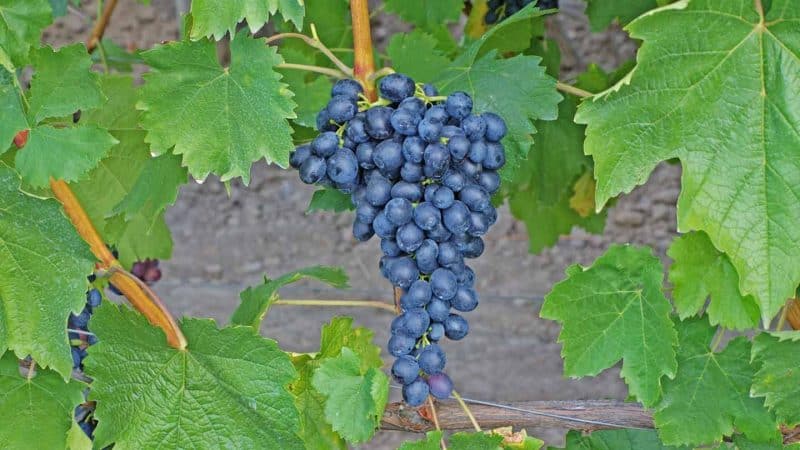
White grapes Rusbol golden color and round-oval fruits. The weight of the bunch is 400–600 g, the pulp is very juicy, the berries are round in shape. Ripening period is 115–125 days. Rusbol is universal in application.
Summer residents celebrate the white variety Skif — technical late with a ripening period of 145 days. The clusters are medium dense, the taste is berry-nutmeg.The berries are small and white, with rough skin.
Of the dark varieties, summer residents choose Muromets table grapes, ripening in 100–110 days. The berries are dark purple, weighing about 5 g, the skin is dense, with a waxy coating. The flesh is crispy and fleshy, the taste is sweet. The ripening of shoots is good, frost resistance is down to -26°C.
Another dark variety Pamyat Dombkowska It has a pleasant pulp and sweet aroma. The clusters are winged, weighing about 350 g. The sultana harvest ripens in 115 days.
Pink variety Pink haze early ripening table. The berries are small, with thin skin, so they are not suitable for transportation. The clusters are large, weighing up to 1.5 kg. Pink haze is grown for fresh consumption.
Diana grapes are chosen for wine preparation and processing. The bushes are weak-growing, the leaves are pubescent. The fruits are round and small, ripen by mid-September. Frost resistance - down to -30°C, sweet nutmeg taste.
How to choose a comprehensive variety for central Russia
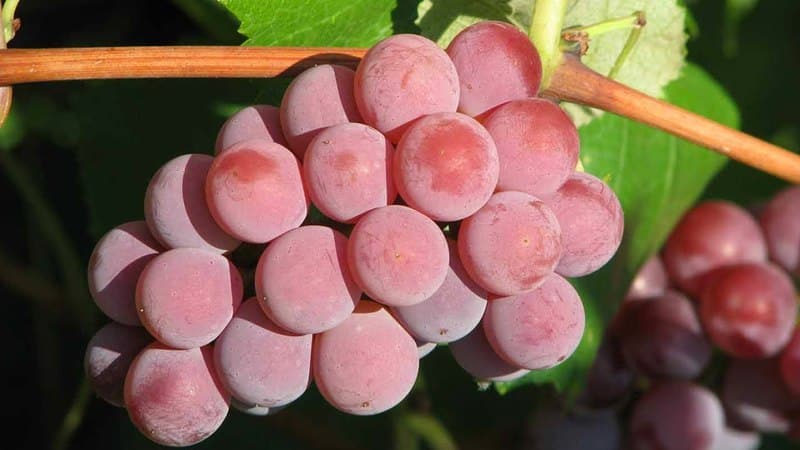
There are hundreds of domestic and foreign grape varieties. To choose the best one, it is recommended to pay attention to the following criteria:
- ripening period: early varieties are grown for fresh consumption and sale, late varieties are grown for processing and preservation;
- immunity: the crop’s resistance to diseases and pests makes it easier to care for and guarantees stable yields;
- commercial qualities: table grapes are chosen for sale; they are distinguished by larger clusters and beautiful fruits;
- taste: for preparing wine, choose technical (wine) varieties, for food - table varieties;
- frost resistance: suitable for regions with warm winters uncovered plants, with cold ones - covering ones.
Holistically sustainable grapes must be frost-resistant, strong immunity, and unpretentious. The choice of taste and commercial properties depends on the purpose of cultivation.
Conclusion
Lunny, Victoria, Crystal, Bacchus are strong and frost-resistant varieties for growing in central Russia. Summer residents choose Skif and Rusbol with white berries, Pink Haze and Diana with pink ones. The yield, taste and marketability of the fruit depend on the correct choice of variety. Ideal grapes can withstand frost and cold and are rarely affected by fungal and viral diseases. Before purchasing seedlings, it is recommended to study the rating of popular varieties, their photos and descriptions.